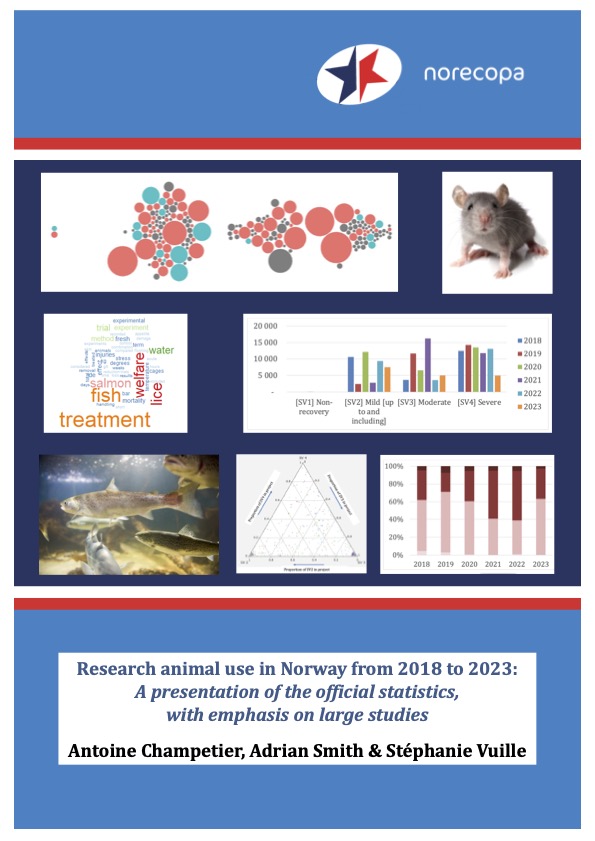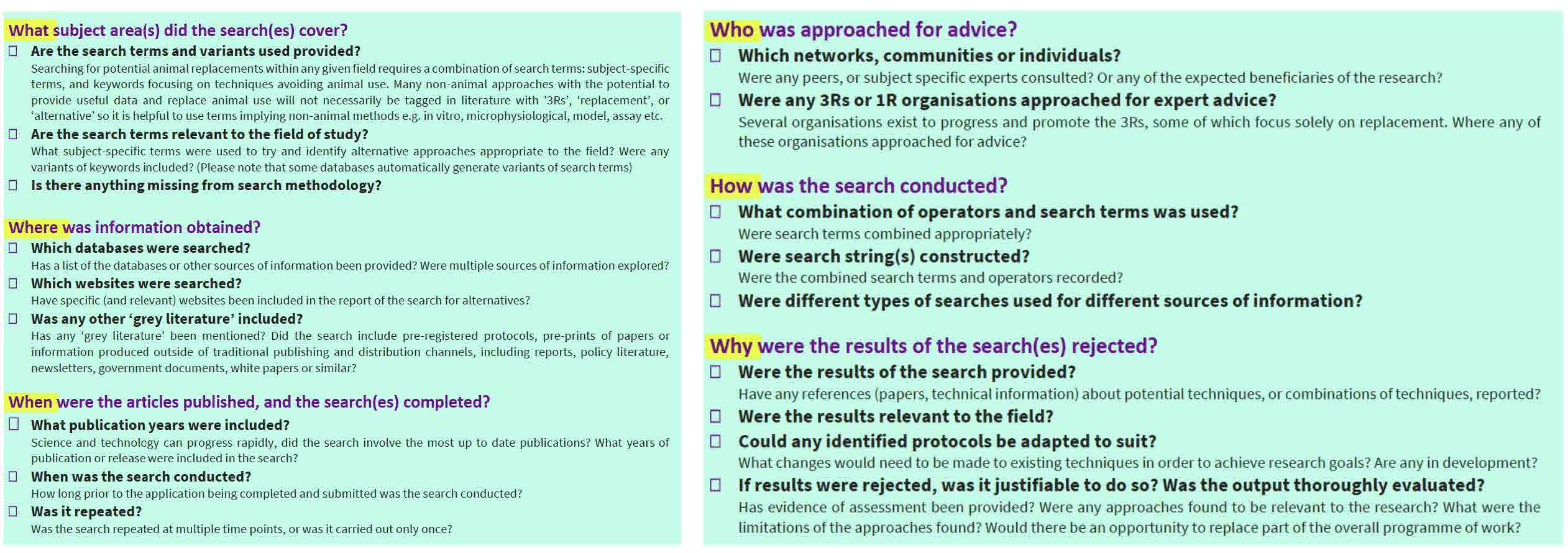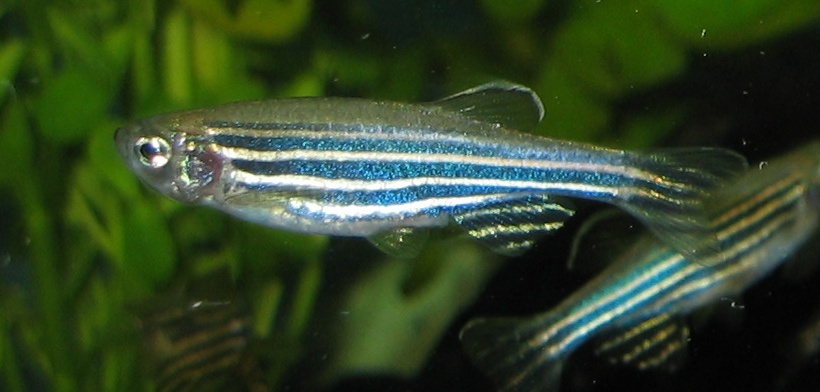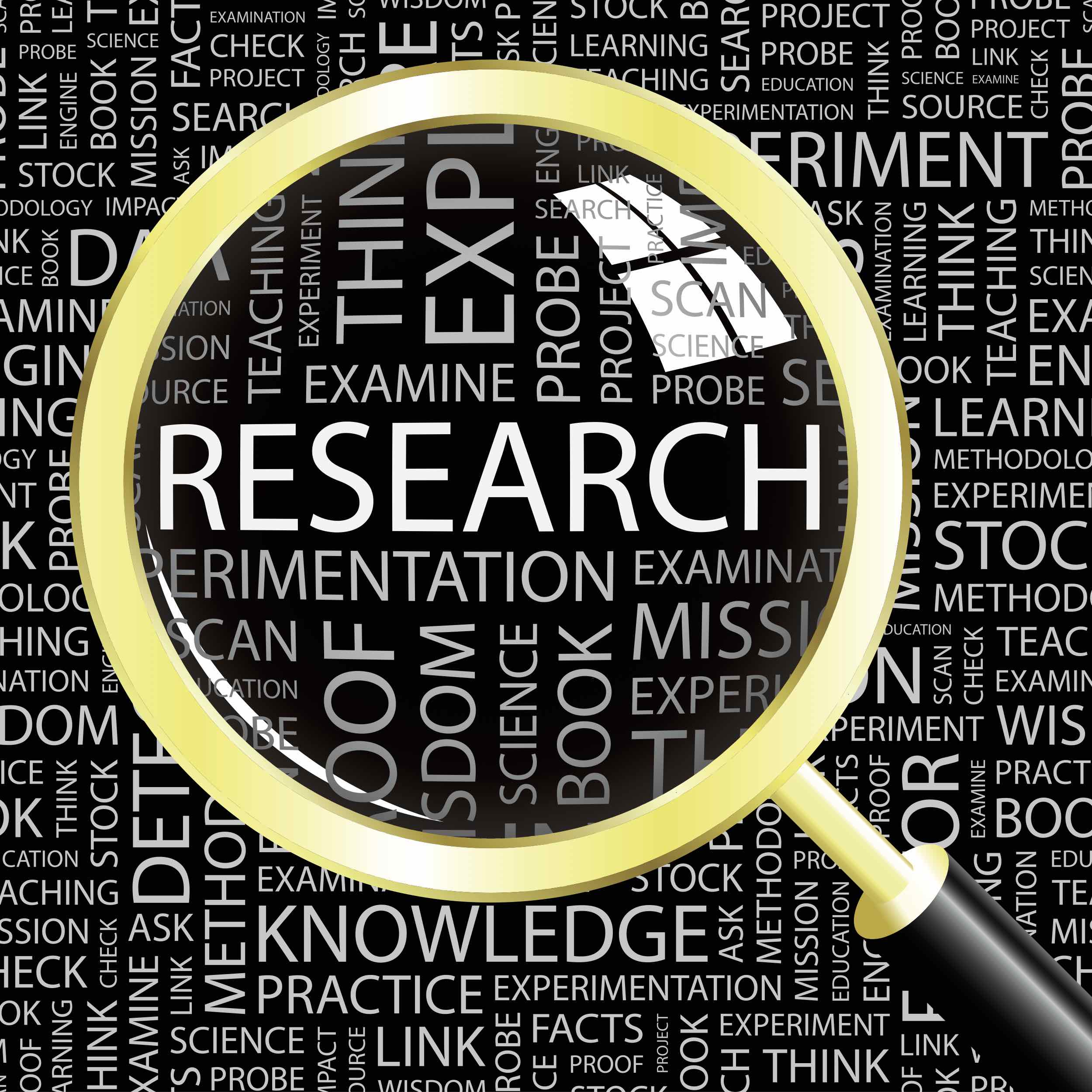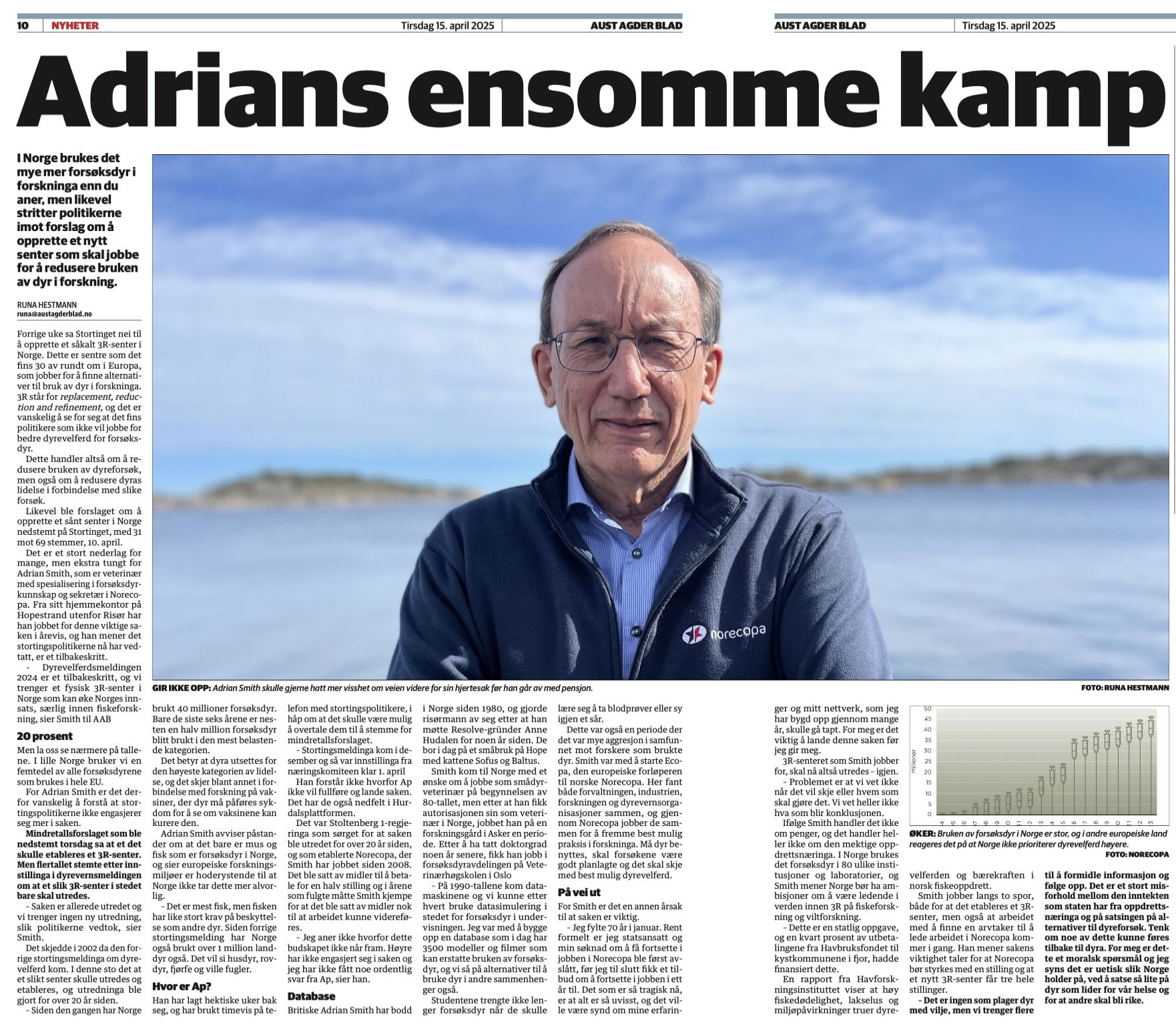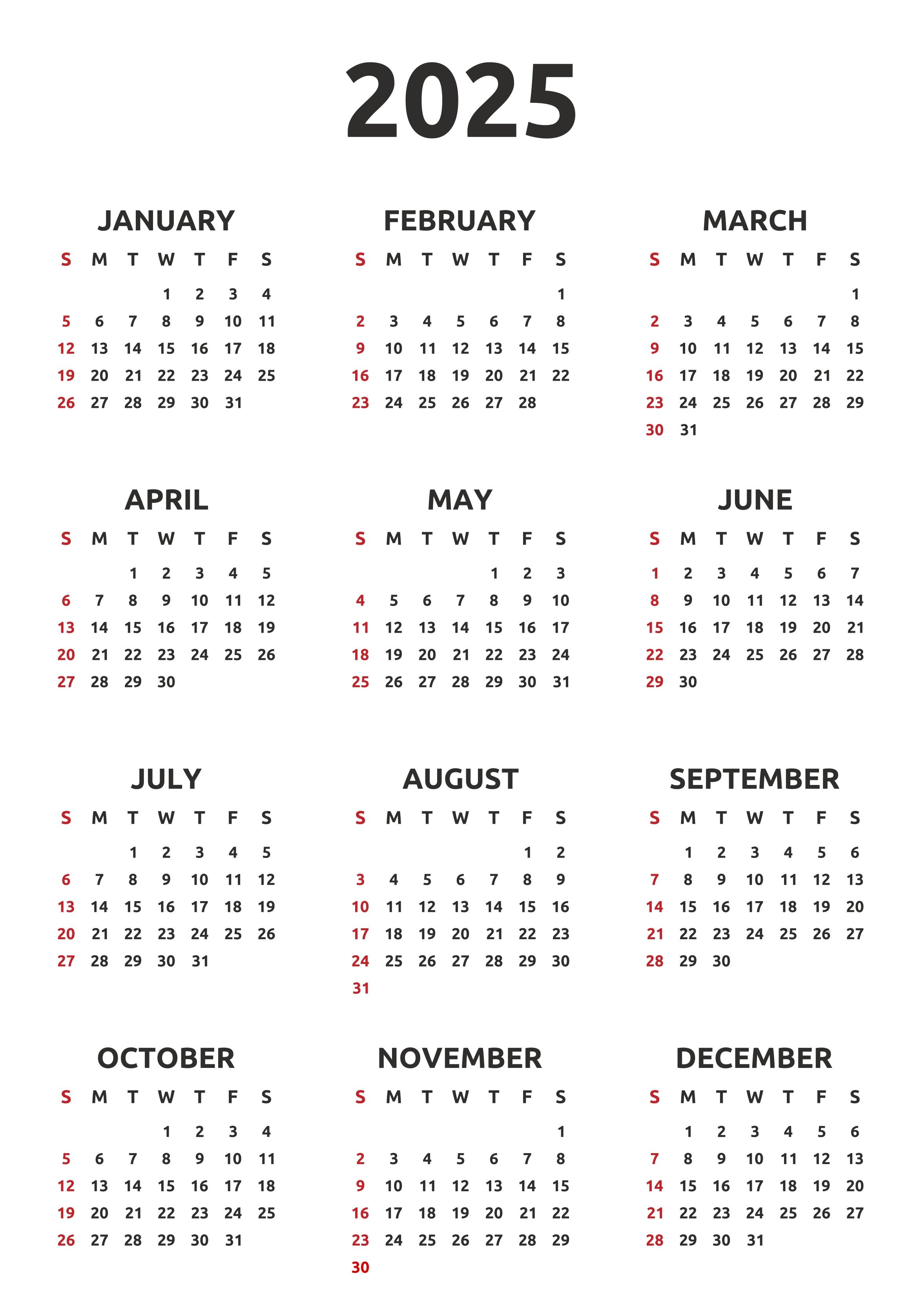|
Newsletter no. 2-2025 from Norecopa
Welcome to Norecopa's second newsletter of 2025. This is the 127th newsletter which we have issued.
We hope you find them of use! We
welcome feedback, positive or negative.
Please share this newsletter with your colleagues and friends, and encourage them
to subscribe!
We are also on
LinkedIn and (to a much lesser extent) on
Facebook and
X.
This newsletter contains the following items (if some links do not appear to work, check that your mail program has opened the whole of the newsletter):
|
•
|
|
|
•
|
|
|
•
|
|
|
•
|
|
|
•
|
|
|
•
|
|
|
•
|
|
|
•
|
|
|
•
|
|
|
•
|
|
|
•
|
|
|
•
|
|
|
•
|
|
|
•
|
|
|
|
Norecopa has won the German Ministry of Agriculture's
Animal Protection Research Prize for 'social and civic engagement in the field of laboratory animals'. The prize comes with 20,000 euros, which will be a very helpful contribution towards Norecopa's scientific activities. Norecopa's Secretary will collect the award in person
at a ceremony in Berlin on 22 April. The ceremony will be sent
live on YouTube for registered participants (deadline 21 April).
Norecopa's
Annual Report for 2024 has been published, both in English and in Norwegian. Milestones last year include:
• upgrading and further development of the website
• hosting
an international Summer School on Systematic Reviews and Literature Searching
• holding 21 presentations in 11 countries
• compiling a detailed report on
the use of animals for scientific purposes in Norway from 2018 to 2023.
• publishing, together with Jon Richmond, a detailed chapter on the 3R concept in the latest edition of the
UFAW handbook on the care and management of laboratory and other research animals.
Adrian Smith held a presentation on
Culture of Care – and status on Norwegian 3Rs initiatives at a seminar entitled
Animal welfare from a practical perspective - sharing is caring! arranged by the University of Bergen and Charles River on 8 April.
The
PREPARE checklist has now been translated into
Lithuanian, bringing the total number of available languages to 37, including all EU languages except Maltese. Thanks to Jurgita Paukstyte for the translation work!
In their paper on
the use of performance-based outcomes in achieving better global harmonisation in the care and use of animals in research, Dewi Rowlands & Javier Guillen write that
'both the ARRIVE and PREPARE Guidelines are complementary to improving harmonisation, in experimental planning and design, conduct and reporting, and, if followed, represent a significant improvement in harmonisation of information and practices leading to published research'.
Adrian Smith contributed to a UK meeting on 2 April organised by the Animals in Science Committee (ASC) for the Chairs or nominated representatives of AWERBs (Animal Welfare and Ethical Review
Bodies), entitled "AWERBs and the thorny issue of replacement". His presentation was
Resources for AWERBs on assessing replacement available on the Norecopa website.
In the end of February the ASC sent ut
an invitation to contribute to a review of how the use of animals in science is progressing, but the window for this is now closed.
He has also assisted Jenny Parks in the administration of the
International Culture of Care Network. Norecopa has sponsored the hire of a meeting room at the FELASA congress in Athens, and also the production of stickers featuring its logo and web address. The meeting at FELASA is for members only, but we welcome new requests for membership, which can be sent to
this address.
|
|
Norecopa's Annual Meeting and scientific seminar will be held on Tuesday 20 May in Oslo. Some of the presentations will be in English and the event will be streamed:
0930 - 1000: Coffee and registration for participants in Oslo
1000 - 1100: Norecopas årsmøte og oversikt over aktiviteter (Sakslisten)
1100 - 1130: Utdeling av Norecopas
3R-pris
1130 - 1215: Free lunch for registered participants in Oslo
1215 - 1245: Dyrevelferdsmeldingen - og hva som har skjedd etterpå (Adrian Smith)
1245 - 1315: The Rise of 3R Centres in Europe (Winfried Neuhaus, president of
EUSAAT, Wien)
1315 - 1330: The Nordic Zebrafish Network -an update (Lars Bräutigam, Karolinska Institutet, Stockholm)
1330 - 1400: Norges bruk av forsøksdyr: hvordan går det? (Adrian Smith)
1400 - 1415: Coffee break
1415-1515: The Use of Animals in Neuroscience (Ingvild
Bjerke, Penn State University, USA)
1515-1530: Discussion and closing remarks
The
documents for the Annual Meeting
can be downloaded.
The
zoom link is here (passcode 283244; Meeting ID: 862 0648 4672)
The meeting will be held at the University of Oslo (the seminar room Curie in the Chemistry building, Sem Sælandsvei 26, 0371 Oslo). If you wish to attend in person, please
contact Adrian Smith.
|
|
In our last newsletter, we reported
the uptake of the PREPARE guidelines by UK scientists, based upon an analysis of the 2,400 Non-Technical Summaries (NTS) of all projects approved by the Home Office
for 2019 - 2024.
We have now performed a similar analysis of these NTS for use of the reporting guidelines
ARRIVE. As can be seen from the figure, PREPARE is rapidly approaching the same level of use as ARRIVE.
|
|
Many will be aware that Norway is currently responsible for about one fifth of
all the animals used in science in Europe. Norecopa, in collaboration with Swiss colleagues Antoine Champetier and Stéphanie Vuille, has collated the official Norwegian statistics for 2018-2023 with sponsorship from the
Research Fund of the Norwegian Animal Protection Alliance (Dyrevernalliansen).
On average, Norway used 1.5 million animals per year in this period (range 1 281 595 – 2 008 625), for a total of 3 104 projects.
There are no consistent trends over the six years for the total number of animals used in Norway, or for the relative occurrence of the four categories of severity.
There were large year-to-year variations in the severity of procedures. These were driven by very large projects involving salmon and other fish. For laboratory species, the severity of procedures tended on average to be higher for zebrafish than for mice, these two species being the main laboratory species in
Norway. Batch testing and other regulatory and quality control procedures are among the uses where severity is highest for fish.
ChatGPT proved to be of limited reliability when used to analyse the text of the Non-Technical Summaries.
The Report
can be accessed here.
The UK organisation
Understanding Animal Research (UAR) has published
a detailed overview of research animal statistics and trends, not just for the UK, and including some international estimates.
|
|
We would like to remind you about Norecopa's comprehensive
International Webinars & Meetings Calendar. For example, just after Easter the Belgian Council on Laboratory Science (BCLAS) is arranging its 2-day
46th Annual Meeting with a large and varied
programme.
An online
survey on eye abnormalities and diseases in mice is currently being carried out. The questionnaire is in German and will be open until
5 May. We encourage all concerned to complete the survey. Any questions can be addressed to
this address.
Do you work with rabbits? The Canadian Council on Animal Care (CCAC) is updating
its guidelines and is looking for
volunteers (see the
terms of reference) by
5 May.
The CCAC has just published its revised
guidelines on reptiles. These replace the previous reptiles guidelines within the
CCAC Guide to the Care and Use of Experimental Animals, Volume 2. This document focuses on reptiles in laboratory facilities and those brought into facilities from the wild. For scientific activities involving reptiles in the wild, including short-term holding in the field, the CCAC guidelines on
Wildlife should be studied.
The European Medicines Agency (EMA) invites comments on its reflection paper about
the current regulatory requirements for veterinary medicinal products and opportunities to implement the 3Rs. The deadline for comments is
30 June.
The 3Rs Collaborative has launched an online
3Rs Certificate Course. The course consists of 5 one-hour modules: Introduction & History of the 3Rs; Replacement; Reduction; Refinement; Applications & Related Topics.
The course is North American-centric and refers to US & Canadian guidelines. The target learner is anyone working with research animals, including students, scientists, technicians, IACUC members, veterinarians, or anyone interested in the 3Rs. Each module ends with a
10-15 question quiz to test learner knowledge. The resource base can be searched with filters for species, environment, readout and scalability (number of animals).
The Collaborative has also produced a
Translational Digital Biomarkers Portal. These biomarkers are objective, quantifiable physiological and behavioural data that are collected and measured by means of digital technologies - which may be internal (e.g. injectable, ingestible) or external (e.g. wearable, camera, or electromagnetic field detector).
The
LAS e-Modules consortium has released an online training module on the basic biology of
pigs, fowls, and ruminants.
ETPLAS has an ever increasing number of free
E-learning modules that can be included in Laboratory Animal Science course curricula, and which are endorsed by EU Member State authorities based upon commonly agreed quality criteria. The latest developments in education and training were discussed recently at a
2-day conference in Leiden.
The Dutch organisation
ZonMw has launched the
NAM Navigator, an online knowledge portal to help scientists navigate through information on the development, standardisation, validation and acceptance of New Approach Methodologies (NAMs).
Norecopa has started
a webpage with links to more resources on both NAMs and NATs (non-animal technologies), and to articles discussing the various definitions of these terms, for which there is as yet no general consensus. We welcome suggestions for additions to the page.
The Dutch
Transition Programme to Animal-Free Innovations (TPI) now has its own website for early career researchers:
Young TPI.
The EURL ECVAM centre has published its
status report for 2024, concluding that the biotechnology boom is being accompanied by a decrease in animal testing. They are arranging a webinar on
“The way forward in the European roadmap for non-animal testing approaches” on 6 May (free registration).
The Centre has also developed
an open access virtual reality (VR) teaching resource to support 3Rs education for high school students.
The Danish 3R-Center is introducing
a talent award that, unlike their traditional 3R Award, is specifically aimed at individuals who are in the earlier stages of their professional journey (defined as less than 10 years post-Master degree). The winner will be asked to present their work at Centre's
3R Symposium in Copenhagen, which will take place on 12–13 November this year.
The Centre has also produced
a useful guide for assessing laboratory animal welfare when working with partners outside Denmark.
The Danish 3R-Center has published its
Annual Report for 2024. We congratulate them with yet another year of solid scientific activity.
Ben Ineichen and Marianna Rosso in Bern have produced
a short video explaining the use of animals in the development of new drugs.
The reports are available from a series of stakeholder workshops on
integrating 3R approaches in WHO guidelines for the batch release testing of biologicals.
The RSPCA has published
welfare standards for good practice in the care and welfare of commercially-farmed pigs at all stages of their lives. Much of this guidance will also be relevant to pigs in research facilities.
The UK Research Integrity Office (UKRIO) has made a good collection of
resources about the use of animals in science.
|
|
Juliet Dukes and colleagues at Replacing Animal Research (formerly FRAME) have reviewed current guidance on the R of Replacement, and have produced a Replacement Checklist that asks the What, Where, When, Who, How and Why in the search for alternatives.
|
|
The Zebrafish Husbandry Association have arranged a series of webinars in a Reporting and Reproducibility series. These were recorded and are available onlone.
Methylene blue is commonly used in zebrafish husbandry as an anti-fungal agent. Nipu and colleagues call for caution, given its ability to confound metabolic endpoints.
|
|
The
Center for Human Specific Research has launched the
Recombinant Antibodies & Mimetics Database.
The
database provides a search function enabling identification of products by name, category, application, host species and reactivity. Detailed information on discovery, production, and sequence data is provided when available. It can also be used to identify suppliers providing bespoke antibody and mimetic solutions.
|
|
Neuroscientist Ingvild Bjerke argues that
data sharing and data re-use is a moral imperative in animal research. She is presenting on this subject at
Norecopa's annual meeting on 20 May.
Have hands-on practicals in pharmacology teaching at university level been outpaced by computer simulations, or is there a (blended) future? Micha Wilhelmus and Benjamin Drukarch
address this question.
Alexandra Bannock-Brown and colleagues have published a review providing
a comprehensive overview of current practices and challenges associated with research synthesis in preclinical biomedical research. They describe critical barriers and roadblocks that impede effective identification, utilisation, and integration of research findings to inform decision making in research translation.
How do animal ethics committees make their decisions? Aoife Milford and coworkers
have produced a scoping review summarising the available empirical literature on the different factors influencing, or likely to influence, decision-making.
In the Journal of Internal Veterinary Medicine, Gary Block describes the potential, practice and pitfalls associated with
evidence-based veterinary medicine.
Declan Finney and Tatjana Baleta encourage scientists
to use and edit Wikipedia, to help improve the information generated through AI. Wikipedia attracts more than 15 billion views a month, yet contributions from academia have been limited - partly because of a perception that they offer little professional reward. Wikipedia’s edit and page-view
metrics can demonstrate societal impact.
Andrew von Eschenbach and colleagues point out that stakeholders, including the FDA, agree that we urgently need
to accelerate and reduce the cost of developing new drug therapies, and showcase the role that Technology and Computational Evidence and Modelling (TCEM), and New Approach Methods (NAMs), can play.
The Society of Toxicology has its own
Specialty Section for
in vitro and other alternative methods, consisting of members who have expertise or special interest in the application of these techniques to address problems of cellular toxicity, with a special emphasis on product safety evaluation.
The findings are now available of a one-day workshop in Zurich on
how universities can lead the replacement of animals i experiments.
Christine Ro has written an opinion piece in Nature on how
early career researchers feel pressured to use animal models to meet journal and funder requirements: "animal methods bias".
Verena Heise and coworkers suggest
ten simple rules for implementing open and reproducible research practices after attending a training course.
Rodent surgeries: who is performing them and how? Felix Gantenbein and coworkers have conducted a study that provides insight into surgical education and experience, available infrastructure, workplace
satisfaction, and the application of good surgical practice in laboratory rodent surgery.
Wound-healing assays are commonly used to study wound repair in mice. Matan Yampolsky and colleagues show that the location of the wound site and the animals' housing conditions
can affect wound healing and the reproducibility of the assays.
Sara Gargiulo and colleagues discuss the challenges in providing
veterinary care in rodent models of stroke.
Pharmacologist Sarah Bailey has been interviewed about
the use of the forced swim test to study depression.
Edwin Louis-Maerten and Davis Shaw provide their views on
the ethical collection of animal cadavers for veterinary education.
Is animal research unethical? This question is
addressed in a blog by
Understanding Animal Research.
Should you feel sorry for lab mice?
Rita Turpin gives her answer.
|
|
Norecopas sekretær har vært i mediene i forbindelse med ønsket om å etablere et 3R-senter. Han var på
Dagsrevyen 21 søndag den 6. april (bilde). Innslaget var resultatet av et timelangt intervju. NRKs kommentarer ('Flere vil kutte antallet drastisk' og 'Adrian Smith er den eneste som jobber heltid for å redusere bruken av forsøksdyr i Norge') er ikke sitater, men reportasjen gir ellers et godt bilde av hans budskap, som var det akutte behovet for flere ressurser til Norecopa og til et
3R-senter.
Årets
fiskehelserapport fra Veterinærinstituttet (for 2024) inneholder et eget avsnitt (5.5) om forsøksfisk brukt i 2023, og flere andre kommentarer om forsøksdyr.
|
|
Innstillingen fra Næringskomitéen til
Dyrevelferdsmeldingen ble
debattert i Stortinget den 8. april, og forslagene ble votert over den 10. april.
FrP hadde fremmet et mindretallsforslag sammen med SV, Venstre, MDG og Rødt hvor det sto
"Stortinget ber regjeringen legge fram forslag til opprettelse av et norsk 3R-senter med fast ansatte for å styrke arbeidet med å finne alternativer til bruk av forsøksdyr i Norge".
Forslaget ble stemt ned med 69 stemmer mot 31. Ap, H og KrF stemte i mot, sammen med, ikke overraskende, Senterpartiet som hadde landbruksministerposten (Geir Pollestad) da
meldingen
ble lagt frem den 20. desember i fjor.
Konklusjonen i meldingen som dermed ikke ble endret er at:
'Regjeringen ønsker derfor å utrede nærmere hva den konkrete rollen til et norsk 3R-senter bør være, hvordan det best kan organiseres
slik at ressursene utnyttes på best mulig måte, og kostnadene som vil være forbundet med dette. En opprettelse av et separat 3R-senter, med tiltenkte oppgaver, må vurderes opp mot dagens organisering og finansiering'.
Denne konklusjonen er til tross for at meldingen
også sier at 'utviklingen i Europa går mot at land etablerer nasjonale 3R-senter, i tillegg til en forsøksdyrkomité og det europeiske ecopa-nettverket. Innspillene til meldingsarbeidet peker på at det bør opprettes et eget norsk senter for å løfte søkelyset på 3R, og at et slikt senter bør kunne dele ut egne forskningsmidler'.
Den norske Veterinærforeningen har sendt
et innspill til LMD om statsbudsjettet for 2026, hvor de sier at
'det haster å etablere et 3R-senter og ber om at det for 2026 settes av 10 millioner til utredning og oppstart.'
Den 15. april var det
en tosiders reportasje i Aust Agder Blad (gjengitt med tillatelse) om Adrian Smiths arbeid, og en lignende sak
i nettavisen.
Lite har skjedd siden Norecopas styre
skrev denne kronikken for over 10 år siden.
|
|
Please help us in this task by forwarding this newsletter to friends and colleagues who may wish to subscribe. The white box at the bottom right of every page on Norecopa's website, or this link can be used.
|
|
|
Earlier editions of Norecopa's newsletter can be read here. They were published in Norwegian up to no. 2-2017. Free text searches on
Norecopa's website will also find resources which we have described in newsletters.
Mention of an institution, publication or professional service in these newsletters does not necessarily mean that Norecopa endorses all aspects of the activity. Norecopa and its staff are not involved, financially or otherwise, in these external activities unless this is explicitly stated.
|
|
Content:
Norecopa
Editor:
Adrian Smith
Org.no. 992 199 199
Bank account: 2801.53.03931
Vipps: 889149
All photographs in the newsletters have been taken by Norecopa or from
colourbox.com, unless otherwise specified.
You can read about
Norecopa's data protection and privacy policy here.
In compliance with the EU Data Protection Regulation (GDPR), Norecopa updated its personal data and privacy policy in 2018.
You can read about this here.
|
|
|






